|
By accessing or using The Crittenden Automotive Library™/CarsAndRacingStuff.com, you signify your agreement with the Terms of Use on our Legal Information page. Our Privacy Policy is also available there. |

Bring Saturn Back!
|
|---|
|
|
Topics: Saturn
Opinions expressed by Bill Crittenden are not official policies or positions of The Crittenden Automotive Library. You can read more about the Library's goals, mission, policies, and operations on the About Us page.
|
Bring Saturn Back!
Bill Crittenden
6 January 2018
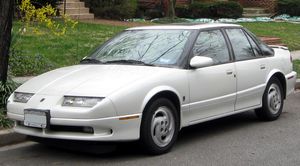 1994 Saturn SL2 Homecoming Edition 1994 Saturn SL2 Homecoming Edition
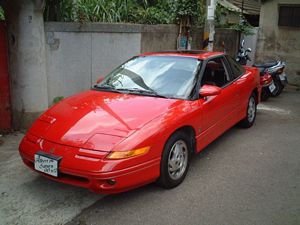 1996 Saturn SC2 by Albert Chen (CC-BY-SA) 1996 Saturn SC2 by Albert Chen (CC-BY-SA)
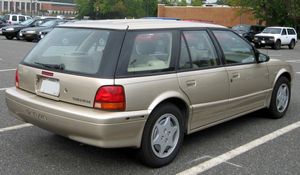 1st Gen Saturn SW 1st Gen Saturn SW
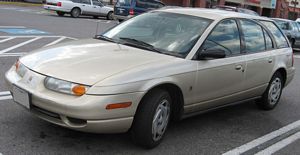 3rd Gen Saturn SW 3rd Gen Saturn SW
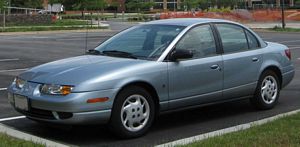 3rd Gen Saturn SL 3rd Gen Saturn SL
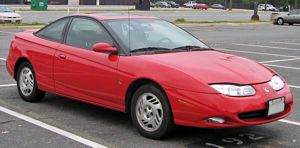 3rd Gen Saturn SC 3rd Gen Saturn SC
|
Saturn was a car company truly “ahead of its time.” It’s time has finally come but it’s missing in action. Of all the brands that General Motors has folded in the last fifteen years, Saturn is the one that needs to come back.
Most people vaguely remember the simple compact cars of the 1990's with plastic body panels that wouldn’t rust or peel or dent when hit by a cart in a parking lot, but there was so much more to the brand. Those panels were part of one of the most recyclable cars in the world at the time, built in a plant that was way ahead of the curve in being environmentally conscious, by a marque billing itself as "A Different Kind of Car Company, A Different Kind of Car."
Saturns were sold at set prices in small dealerships mostly by twentysomethings in polo shirts. The no-haggle, transparent pricing model meant that buying a Saturn wasn’t a battle of wits with a slick-haired salesperson in pinstripes and his four-square payment models who speaks only in monthly payments and disappears for a half an hour at a time to “run numbers by” the unseen-but-dreaded Sales Manager. Instead, buying a Saturn was an experience more like going to an Apple store for an iPad today.
People loved the quirky cars and the friendly brand built around them. There were annual “Saturn Homecoming” events for owners at the headquarters in Spring Hill, Tennessee.
In the 1990’s General Motors experimented with full electric vehicles, and in 1996 when GM sent its much anticipated EV1 into the world (the first car sold directly under GM as a marque) it connected them to Saturn dealerships by having them serviced there. People called them Saturn EV1's and it was hoped that Saturn would become the first mass market electric car company.
The Decline
By year 2000 the EV1 still hadn't been mass produced, and Saturn was already missing out on the hybrid market. In the coming years the accountants and brand managers at GM began bringing Saturn’s products closer to the rest of the company's offerings for the sake of cost savings. In just ten years this chipped away at what made Saturn special until there wasn’t anything left worth saving.
Despite the Honda engine setting it apart from the rest of it's corporate cousins the 2002 Vue was a conventional small SUV with conventional steel panels. The 2003-2007 Ion was the last Saturn with plastic panels. The 2005 Relay minivan was the same as the Chevrolet Uplander in every way except badge (and some cringe-worthy advertising about male fertility).
The ideals behind the founding of Saturn in the 1980's were finally put to an end in 2007. The Sky roadster was released, which sold well but never fit in with Saturn's lineup and really should have been sold as a Buick. Two more cars joined the lineup: the Outlook was a bloated-looking full-size crossover, and the Aura was a Pontiac G6 with a little extra chrome. The most siginificant act in casting aside any pretense that Saturn was going to be a "different kind of car company" anymore was that the headquarters was moved to Detroit. Saturn finally got its first hybrid, far too late to save the brand’s image against a wave of Priuses. Production of the Ion ended, and with it the last plastic paneled Saturn.
The last new Saturn, the Astra, was a thoroughly unexciting Vauxhall/Opel import. Even if you don't remember the car you might remember the Vauxhall Astra name for being constantly mocked by Jeremy Clarkson on Top Gear.
Production ended in the 2009 recession and in 2010 the brand officially ended as part of the U.S. government bailout of GM.
Missed Opportunity
Saturn, like Pontiac and Oldsmobile before it, tried to be all things to all people by diluting its brand while GM gutted what set Saturns apart to cut costs. The result was a lineup that consisted of minimally-badge-engineered cars and castoffs and odd castoffs that didn't fit into other lineups.
Since then we’ve seen the rise of Tesla with its single-minded focus, Subaru has built a loyal following on environmentally conscious manufacturing and socially conscious marketing, small dealerships for Fiat and Mini are successful despite making no attempts to sell anything larger than the smallest AWD wagons, and GM is finally getting into electric vehicles again by squeezing the Volt and Bolt into the already overcrowded Chevrolet showrooms.
GM should not have focused on trucks & SUVs and missed the boat so badly on hybrids and small cars. Had GM continued with a true-to-ideals Saturn replacement for the Ion, especially if a hybrid was offered, they might have fared much better when gasoline prices hit four dollars per gallon. GM could have continued the electric vehicle program, making a mass market EV2 officially a Saturn. As other carmakers finally start to take Tesla seriously, Saturn should have always been their top competition since the days of the Roadster.
Having missed out on continuing the Saturn mission from the beginning, the Volt could have been the first model in a renewed, post-recession Saturn. The Bolt, of course, would have gone well right alongside it. They could have followed this up with a Jolt sports coupe and hopefully a truck that would have beaten Tesla’s still unproduced pickup to market. Instead, post-bailout GM has decided to make almost everything a Chevrolet and thus relegate the Volt/Bolt to sideshow status while it spends its advertising money pushing the new Camaro through NASCAR and Michael Bay movies.
Another Opportunity Coming
There’s still one more good chance coming up to renew Saturn and make it something truly special while the current car buying generations have memories of the classic Saturns in their prime. Tesla has been pushing hard in state legislatures to overturn the rules against manufacturers selling directly to the public. If that's successful, General Motors should bring Saturn back in a direct-to-consumer sales model experiment.
Imagine a separate line of Saturn “stores” that sell electric & plug-in hybrid cars made with recyclable materials and undentable plastic body panels. These stores would be staffed with friendly, no-pressure, non-commission “product experts” guiding you through sales with low, no-haggle, transparent pricing like the kids at the Apple Genius Bar.
They’d hold events for Saturn drivers and potential buyers alike at the stores and build a community of enthusiastic owners like Saturn used to have and Tesla is creating now. They’d have great brand ambassadors chosen not for album sales or athletic championships but their socially or environmentally conscious message. Remember Leonardo DiCaprio and his Prius? I wonder what Neil deGrasse Tyson and Bill Nye drive these days. Saturn marketing could highlight researchers and scientists, advertising their advancements along with the cars.
Saturn would be the proving ground for the leading edge of GM technology, tested on the smaller-volume brand and then filtering down through the rest of GM’s lineups once it’s been debugged by the kind of “early adopters” who wait in line for hours for the newest iPhones and accept the bugs as part of having the latest tech. What better name for a high-tech car company than Saturn, with it’s planet and rings logo?
The original Saturn home in rural Tennessee, well outside of GM’s big Detroit headquarters, was one of the more interesting features of the marque. Nowadays Silicon Valley is definitely the kind of place a big, technologically progressive startup should locate, but Silicon Valley culture would be antithetical to the friendly, humble aspects of the Saturn brand I loved so much. The Pacific Northwest, Colorado, or the Dallas-Fort Worth area are all trendy tech hubs with technologically skilled workforces, much better images, and lower operating costs than San Francisco.
What Saturn could be, and should be, is GM’s answer to Tesla. Just separate enough from the rest of GM in the way Saturn used to be so as not to stifle their creativity and slow them down in a rapidly changing market segment. Chevrolet can always borrow from them later without dictating their operations.
Tesla is able to succeed, in part, because nobody else is competing directly with them despite having proven a demand for their product. It’s not that other car companies don’t make electric vehicles, but none make them with the performance of Tesla, none have the technologically-driven user interface of Tesla, and none of them have an inspirational personality like Elon Musk. What Tesla doesn't have, that the major automakers do, is the baggage of broad product lineups and dozens of layers of management to slow them down. That's why the Volt & Bolt were delayed, watered down, sent to the back of the lots, and forgotten in the rest of Chevrolet's advertising. Tesla is focused on a mission beyond showing profit on quarterly earnings reports.
A competitor to Tesla could arise from almost any major automaker, but no one else has the history that General Motors does with Saturn. Anyone else would be starting from scratch, and that’s hard to do in such a crowded market. Nineties nostalgia is running high right now, and people may be in a mood to forget Saturn's terrible 2000’s (easily done) to look back fondly to when Saturn was at its peak and give them another chance. General Motors would have to balance taking advantage of their catalog of parts & suppliers with making a new marque unique, but if they can get it right they can do something that Tesla cannot: make enough affordable compact electric cars to really change how the world powers its vehicles.

















 1994 Saturn SL2 Homecoming Edition
1994 Saturn SL2 Homecoming Edition
 1996 Saturn SC2 by Albert Chen (CC-BY-SA)
1996 Saturn SC2 by Albert Chen (CC-BY-SA)
 1st Gen Saturn SW
1st Gen Saturn SW
 3rd Gen Saturn SW
3rd Gen Saturn SW
 3rd Gen Saturn SL
3rd Gen Saturn SL
 3rd Gen Saturn SC
3rd Gen Saturn SC
